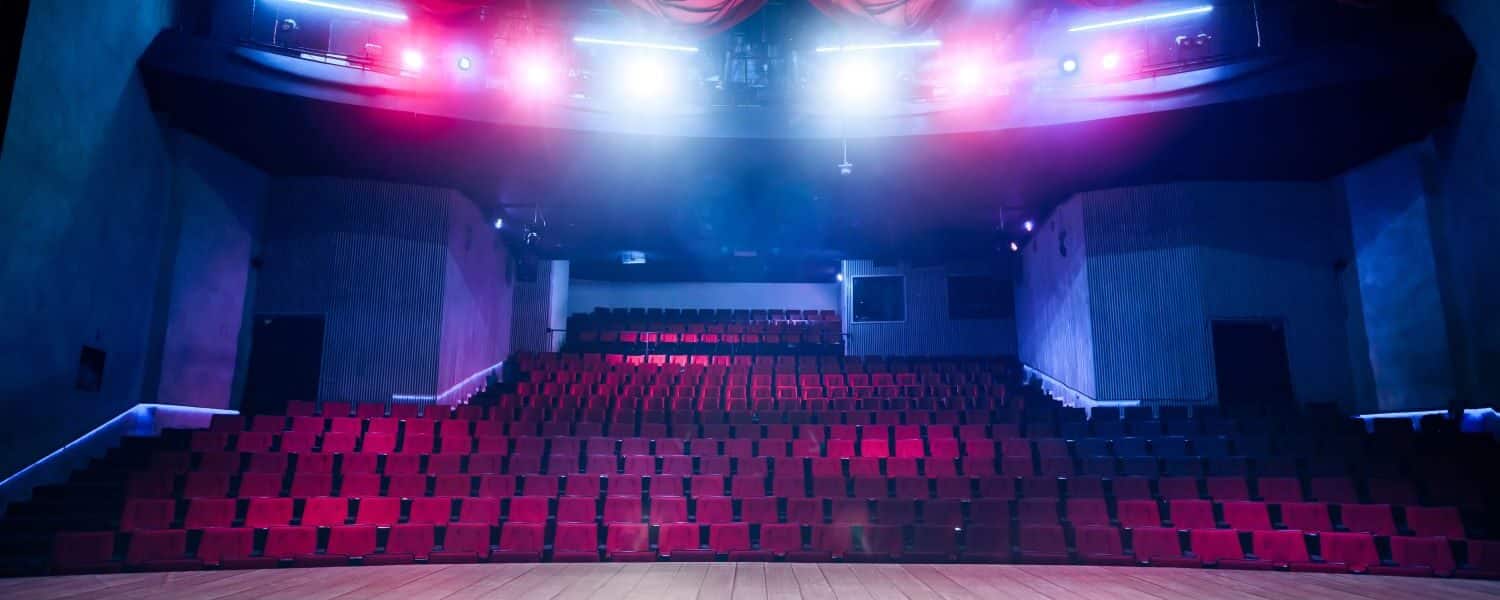There is no question that participating in high school theater teaches students a broad range of life skills including teamwork, problem-solving, and multitasking, regardless of whether they are audience-facing or working behind the scenes.
Providing high school students with high-quality theater technology and equipment allows them to learn the difficult but rewarding job of a stagehand, including operating lights, sound systems, curtains, stage effects, rigging, and designing and repairing sets.
Here is a sample of the backstage equipment a student may learn to use as part of a high school theater program:
Rigging
Every high school theater should include some type of rigging, to move, lift, and support scenery, lighting, and other heavy equipment without ladders or lifts.
Rigging can be dead hung, manually operated, or motorized. Dead hung rigging suspends equipment but can’t be moved. Manually operated or motorized rigging can manipulate scenery, stage lights, or curtains in the backstage area.
Many theaters incorporate more than one type of rigging to accommodate a variety of productions.
In a high school theater program, the stagehands are thoroughly trained in how to use the rigging system safely.
Soundboards
A soundboard is a console that allows stagehands to mix the levels of input from stage microphones, orchestra mics, and any other sound effects that are part of a production.
In a high school theater, soundboard operators learn to use the console and any other sound equipment and typically have other responsibilities such as sound checks, fitting actors with mics, and troubleshooting sound problems.
Lighting
Among its many purposes, theatrical lighting sets the mood, creates dramatic effects, and cues the audience as to the time of day or season it is.
Stagehands that control lighting use an electronic control console to manipulate many types of stage lights at one time.
To bring a production to life, most high school theaters include a variety of lighting, such as:
- Powerful floodlights can cover the entire stage and may also be outfitted with gel to change the color
- Color-changing LED lights
- Fresnels, which are smaller lights that illuminate specific areas on a stage and can be outfitted with flaps known as “barn doors” to vary the size and shape
Acoustical Shells
Acoustical shells optimize sound, improve acoustics, and provide a dramatic background for performers.
They are usually constructed of a series of vertical towers and ceiling clouds that hang from the rigging system and can be constructed of a variety of materials, such as wood, wood veneer, laminates, or painted surfaces. This solid surface directs the sound toward the audience.
Acoustical shells can be portable or permanent, but moveable acoustical shells are most practical for high schools as they are easy for students to operate and move from place to place, such as from practice to performing spaces, with ease, and store compactly when not in use.
This information is courtesy of Port Lighting, which provides theatrical lighting, rigging, and curtains for every type of theater venue, including high school auditoriums, www.portlighting.com.





